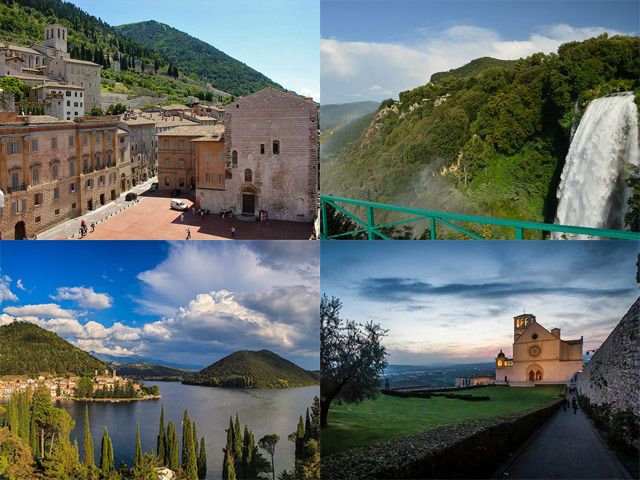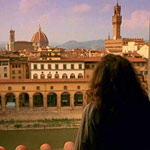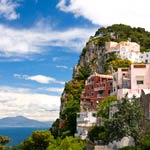The Way of St Francis: in Francis of Assisi’s footsteps on his 550km pilgrimage from Florence to Rome
The idea for this article was submitted by Hannah of Cicerone Press, who asked me if I would be interested to write an article about the Way of St Francis, a walking route retracing the amazing pilgrimage completed by St Francis of Assisi in the 13th century.
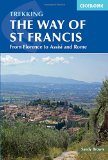 The month-long walking route, as suggested by Sandy Brown, the author of the guidebook The Way of St Francis, is one of the world’s greatest pilgrimages, passing through two States, Italy and Vatican city, three regions, Tuscany, Umbria and Lazio and three major religious historic hubs, Florence, Assisi and Rome. The itinerary connects important travels and travel destinations from the life of Francis of Assisi, one of the most venerated religious figures in history.
The month-long walking route, as suggested by Sandy Brown, the author of the guidebook The Way of St Francis, is one of the world’s greatest pilgrimages, passing through two States, Italy and Vatican city, three regions, Tuscany, Umbria and Lazio and three major religious historic hubs, Florence, Assisi and Rome. The itinerary connects important travels and travel destinations from the life of Francis of Assisi, one of the most venerated religious figures in history.
Proclaimed a saint by Pope Gregory IX in 1228, Francis was a simple man from Umbria who became one of the patron saints of Italy and the first recorded stigmatic in Christian history. In Christianity, a stigmatic refers to a person bearing physical “marks” on his body, known as stigmata, which are believed to represent the wounds that Jesus Christ received at the crucifixion. St Francis received the stigmata on Mount Penna in 1224. Mount Penna and the Santuario della Verna are one of the highlights of this walk.
In 1223, Francis also arranged for the first living Christmas nativity scene, a tradition that lives on in Italy to this day. See more at: http://slowitaly.yourguidetoitaly.com/2011/12/living-nativity-scenes-in-italy/
St Francis’ sacred travels began with a walk in 1209 when he and his friends walked from Assisi to Rome to visit Pope Innocent III. By 1221 Francis’ exceptional character, faith and purity had inspired a movement of followers with renewed spiritual strength that had spread across Italy and beyond. Since the 13th century pilgrim walkers from all over Europe have traveled to Umbria to venerate St Francis and retrace the saint’s steps to capture his love of this land.
As there is no historic text suggesting an “official” itinerary several variants have been proposed over the decades, among which the Via Francigena di San Francesco (Via di San Francesco), Camino di Assisi, Di qui Passo’ San Francesco, Cammino di San Francesco, Der Franziskusweg, Sentiero Francescano della Pace and Via di Roma.
What makes the itinerary as suggested by Sandy Brown stand out is that it combines the most important sites identified with the life of St Francis into a 550-km long walk, while taking great care to make each of the 28 stages of this walk an enjoyable and scenic daily experience with easy access to services and economical overnight lodging. The route also starts and ends in locations that provide easy access to air and/or other transportation from Italy or abroad. Actually, the itinerary is an optimized version of the Via di San Francesco and Via di Roma, but avoiding long and poorly marked routes, and with an additional part from Florence to the hard-to-reach Santuario della Verna on Mount Penna. Each of the 28 stages comes with detailed route descriptions, stage maps and walk directions. For faster walkers the book also provides the ideal combinations to complete the itinerary in 23 days.
The walk as outlined in the book is often challenging due to the rugged topography of the north and east borders formed by the Central Apennines. A daily climb and descent of 500 to 1000 meters is not unusual. However, the author provides a detailed information box at the start of each stage with start and finish points, distance, total ascent and descent, difficulty rating, duration and other relevant notes which allows the walker to easily manage the daily route and schedule.
Leafing through this book brought back happy memories of my travels in Umbria, Lazio and Tuscany, so while writing this article I couldn’t resist adding a few of my own suggestions and impressions. Below I have selected 14 of the highlights of the walk among the many beautiful sights detailed in the book, with a few additional details and a few snapshots (not from the book), which should be enough to get you into the starting blocks!
For a more detailed description of the daily walking routes, Franciscan sites, detailed stage maps, directions, planning tips and suggestions for accommodation please refer to the book The Way of St Francis.
1. Florence (province of Florence, Tuscany)
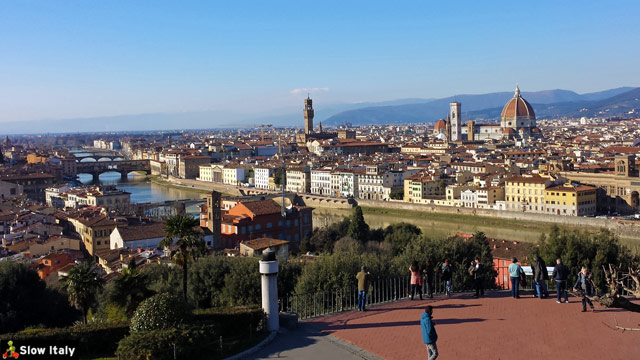
The walk starts in Florence, with its incredible architecture, world famous art works and beautiful piazzas, the Duomo, Giotto’s Bell Tower, the Gates of Paradise. If you have never visited Florence plan an additional one or two days at least to enjoy the many monuments and art works.

For additional info or alternative things to do in the Renaissance city you may also want to check one of our articles on Florence: The Gates of Paradise, Top 10 movies filmed in Florence, Top 9 historic cafés.
2. Monastic Community of Camaldoli (province of Arezzo, Tuscany)
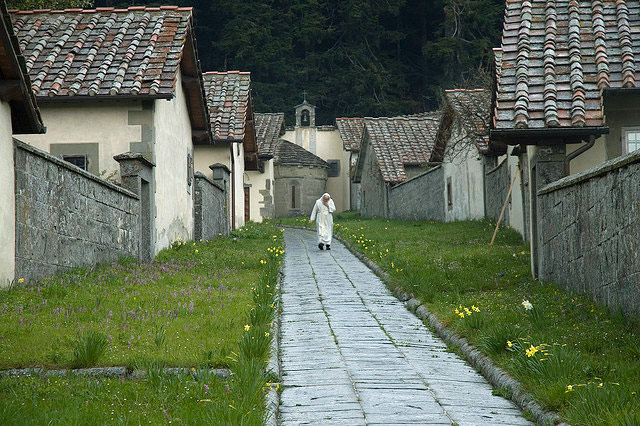
The ancient hermitage and monastery of Camaldoli was founded in 1012 by St Romualdo, a benedictine monk from Ravenna. The community is renowned for following a rigorous interpretation of the monastic Rule of St Benedict. The monks lead a self-sufficient existence, consuming only vegetarian products and selling products they have made for centuries. Since its establishment in the 11th century the community is also famous for having produced an illustrious array of church leaders, among whom four cardinals, many bishops and artists, such as Guido d’Arezzo.
3. Badia Prataglia (province of Arezzo, Tuscany)
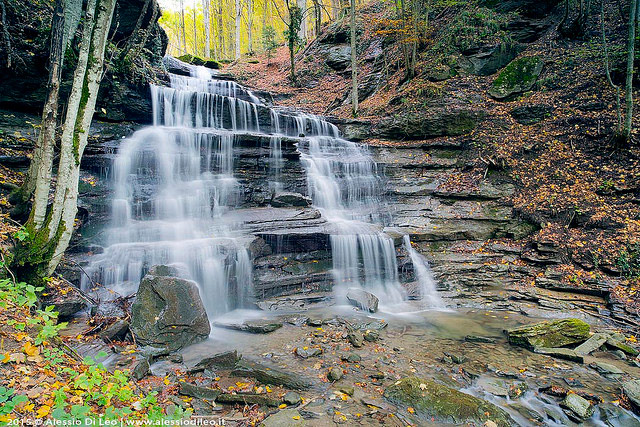
A nature reserve within the lovely Casentino Park (Parco nazionale delle Foreste Casentinesi, Monte Falterona e Campigna), Badia Prataglia is home to the Fall Foliage Festival, a mix of events connected to fall foliage and chestnuts. The surrounding hills offer beautiful walks along streams and forest trails with waterfalls.
4. Santuario della Verna (province of Arezzo, Tuscany)

Walking from Florence to the remote mountain retreat Santuario della Verna, through the Casentino park, is like walking back in time from the Renaissance into medieval times. Considered one of the most holy and spiritual places in Italy, Santuario della Verna was one of St Francis cherished places, which he loved for its seclusion. Santuario della Verna is famous for being the place where St Francis received the stigmates in 1224. Due to its remote location the sanctuary has retained much of its seclude and peaceful character that it had when St Francis visited it more than 800 years ago.
5. Pieve Santo Stefano and Lago Montedoglio (province of Arezzo, Tuscany)
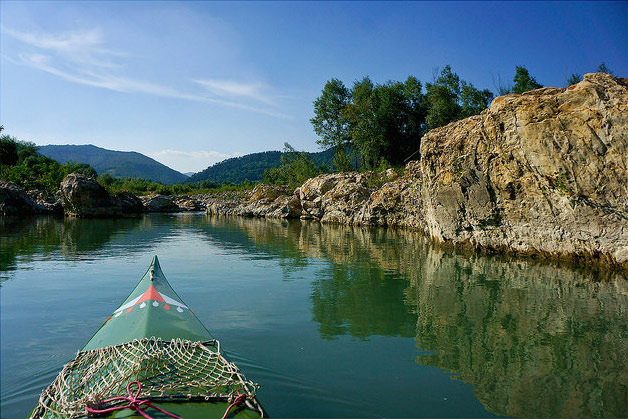
Pieve Sante Stefano town is known as the “City of the Diary” (Città del Diario) for the archive of over 7000 journals, diaries, letters and autobiographical memories gathered by journalist Saverio Tutino as a sort of memorial to the daily lives of ordinary people.

6. Gubbio (province of Perugia, Umbria)

Spread out over the steep slopes of Monte Ingino, Gubbio is one of the Italian towns in which the harsh conditions of life at St Francis’ time can most easily be imagined. The most important sites include the città vecchia (historic town center), the Palazzo dei Consoli and the Palazzo Ducale.
Since Medieval times Gubbio has been famous for its ceramics. Gubbio is also home to a remarkable discovery, the Tavole eugubine, seven bronze tablets inscribed in ancient Umbrian, a unique piece in the fields of linguistics. – See more at: 5 Charming little towns in ancient Umbria.
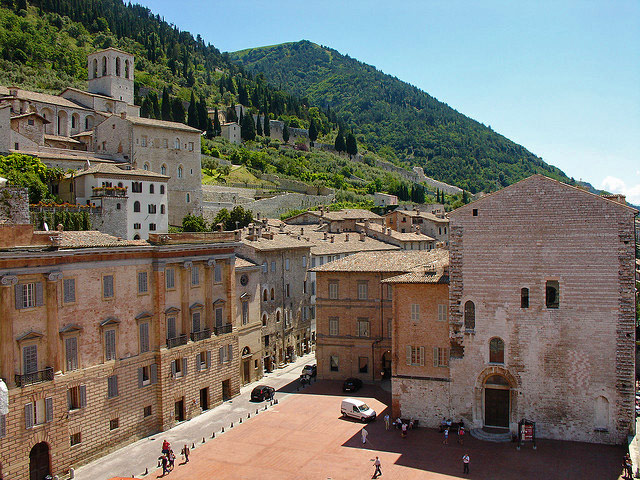
7. Assisi (province of Perugia, Umbria)

The historic hill town of Assisi is the third most visited pilgrimage site in Italy. It is in Santa Maria sopra Minerva in Piazza del Comune that Francis and his friends first opened the Bible and found the call to poverty.The town includes several sights of interest, among which, of course, the Basilica di San Francesco, which contains the sandals and the tunic of St Francis. The Basilica, which was built in honor of St Francis and the event of his canonization, contains one of Europe’s greatest ensembles of 13th and 14th century frescoes.
8. Spello (province of Perugia, Umbria)

Spello has a similar history as Assisi, starting as an ancient settlement of the Umbri, then becoming a Roman city. The lovely town is home to an annual Infiorate Festival, held for over 150 years. It is also famous for its two dozen medieval churches within its walls, among which Santa Maria Maggiore with frescoes by Perugino and Pinturicchio.
9. Lago di Piediluco (province of Terni, Umbria/province of Rieti, Lazio)

Lago di Piediluco lies between the province of Terni in Umbria and the province of Rieti in the Lazio region. Down at the lake you can follow a picturesque boardwalk, the Percorso Lungolago. The village of Piediluco has remained largely unchanged since the Middle Ages. One of the historic gems is the Church of San Francesco, up a flight of steps, which commemorates the journey of St Francis through the territory of the lake in 1208.
10. Marmore waterfalls (province of Terni, Umbria)

Near Terni are the Marmore waterfalls (Cascate delle Marmore), the tallest man-made waterfalls in the world. The panoramic view of the waterfalls immersed in a green forest, is even more dramatic when you realize that they were created nearly 2000 years ago. – See more at: The Green Hills of Umbria.
11. Poggio Bustone (province of Rieti, Lazio)

Poggio Bustone is home to one of the Holy Valley’s four main Franciscan sanctuaries (the other ones being Fonto Colombo, La Foresta and Greccio), where Francis of Assisi, not yet a saint, retreated about 800 years ago to pray and meditate, and became a penitent.

A steep path on the mountainside above the village leads to seven small chapels containing, by tradition, impressions of objects relating to St. Francis. This trail comes to an end at the small church Sacro Speco (the Grotto of Revelation), considered by many the Franciscan site par excellence. It is here that St Francis obtained remission for his sins from Archangel Gabriel.
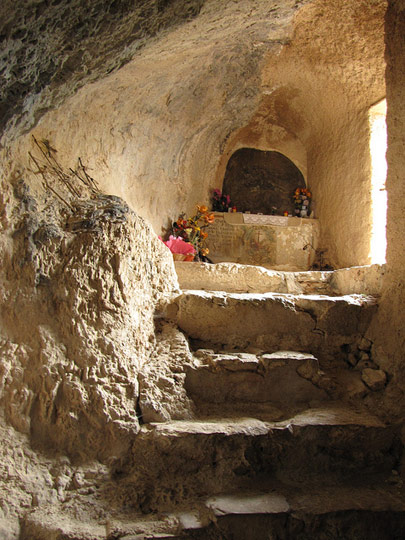
12. Santuario de La Foresta (province of Rieti, Lazio)
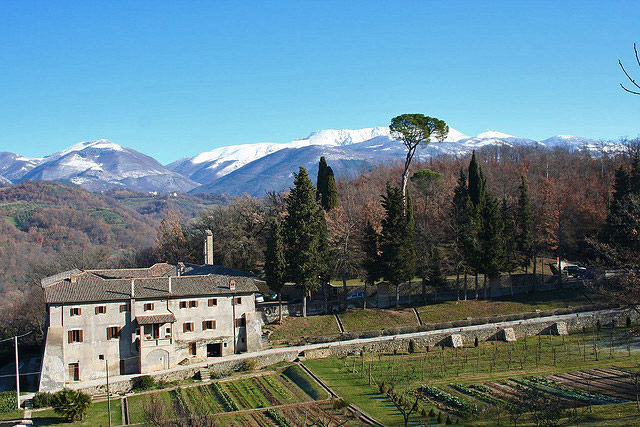
The Santuario de La Foresta is mostly known for the Miracle of the Grapes (Miracolo del Vino). Towards the end of his life St Francis started losing his sight. On his way to a renowned eye surgeon who lived in Rieti, St Francis stayed in La Foresta in 1225.
La Foresta was a small religious community that relied entirely on their wine production for their income. St Francis originally planned to only stay for a night, but ultimately remained there for 4 months. The longer he stayed the more visitors invaded the small community consuming all the grapes, so the members of the community started being concerned about the wine production. According to the legend St Francis had them bring the remaining grapes to the winepress, which yielded twice the production it had in the previous year’s crop, which became known as the Miracle of the Grapes.
13. Rieti (province of Rieti, Lazio)

Surrounded by the Reatini Mountains and overlooked by Monte Terminillo, the hilltop town of Rieti was once a major site of the Sabine nation. The authors of Antiquity considered it the geographical center of Italy (Umbilicus Italiae). The Sabine people appear in many myths and legends among which The rape of the Sabines, a common theme in Renaissance art.
14. Vatican City (Vatican City State)
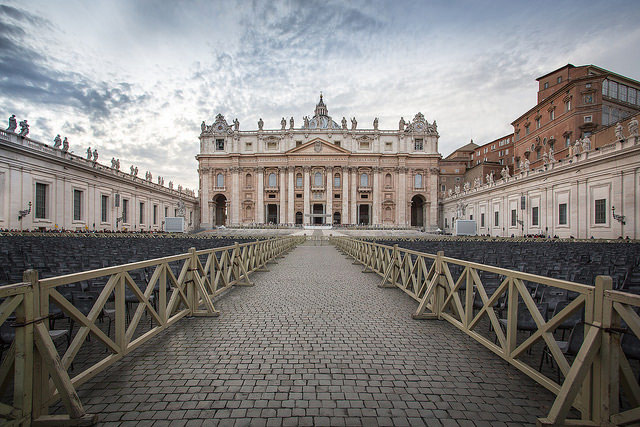
One of the most celebrated pilgrimage destinations in the world, Vatican City is home to the Pope and one of the largest churches in the world, built over the traditional site of St Peter’s tomb. The dome was designed by Michelangelo. At the center of Saint Peter’s Square stands the “Witness”, an ancient Egyptian obelisk believed to have witnessed the crucifixion of St Peter.
For each of the 28 stages of the walk the author suggests nearby hostels, rifugi (mountain huts), agriturismi, local parishes, convents, foresterie (guesthouses), and hotels. The book also provides a very useful estimation of the daily budget based on the suggested accommodation (incl. breakfast), lunch, dinner and incidentals, along with other useful planning and travel tips.

For more info see: The Way of St Francis by Sandy Brown, published by Cicerone Press, a UK-based publishing compagny specialized in guidebooks to walking, trekking, climbing, mountaineering and cycling.
Photo credits (from top to bottom): Spello © Marco Saracco/Fotolia; Monastic community of Camaldoli by Francesco Gasparetti; Badia Prataglia by Alessio di Leo; Santuario della Verna by Helena; Pieve Santo Stefano by Franco Vannini; Gubbio by Rutacultural.com and Matteo Alessandrini; Assisi by Nicola; Spello by Christopher John SSF; Lago di Piediluco by Milarix; Marmore waterfalls by Gianluca Papaccio; Poggio Bustone by Luca Badia and Christopher John SSF; Santuario de La Foresta by Alessandro; Rieti by Mac9; San Pietro by Roberto Taddeo.


